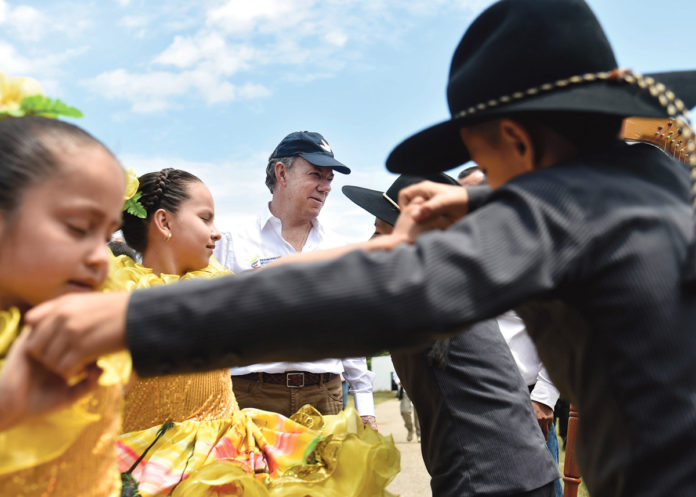With all eyes set on the prize of “peace” with the FARC, there are invaluable lessons being learnt in the austere halls of academia about Colombia and her regions. For this reason, it’s time to talk about the town of La Macarena, deep in the department of Meta, which represents the potential roadmap for future development in Colombia’s vast swathes of overlooked territory in both the Amazonia and Orinoquia.
We are all familiar, at least in images, with the famed Caño Cristales River, but what has yet to be discussed openly is the future of towns such as La Macarena which have been borne of Colombia’s complex cycles of violence. For one minute, push aside the romantic notion of humble people striving forwards into southern Meta to colonize new lands. La Macarena, similar to many distant regions of Colombia, is a territory which has been constructed by war in that it has been populated by people fleeing war and by people making war. It’s a clear example of how generations and entire communities of Colombians have been internally displaced from their original lands in order to survive.
The first “colonos” to arrive in this area in the late 1950s were originally displaced from Sumapaz to areas of Huila and Tolima. And when La violencia struck Huila and Tolima, the same families moved further on into Meta and Guaviare. What we have seen in La Macarena over 50 years has been a wave after wave of colonization, migration and forced displacement. Then, more recently of course, between 1998 and 2002 La Macarena was a central urb in President Andrés Pastrana’s DMZ, zona de distencio?n. Once this experiment came to an end, La Macarena became a sizable military base acting out President Uribe’s Plan Patriota in 2004. So, when you step back to reflect on the history of La Macarena, the settlements which have occurred here are ones of conflict. What’s next? Who will be the next representation of power here in this region?
Where do the baldios, zona de reservas campesinas, the national parks of Picachos, Tinigua and the Macarena (three parks but all connected), the extensive cattle-grazing lands, the petroleum, the coltan deposits and more all fit into the plan?
Could the next phase of colonization and exploitation in the area around the town of La Macarena be what is later referred to as Scientific Colonization? Despite what’s mentioned previously, La Macarena seems desperately short on opportunities for its population. The large scale cattle ranching remains in the hands of a few wealthy landowners and the lands of the Yari Savannahs where this is practiced are notoriously acidic requiring a change in the type of grass for grazing purposes. This grass does not permit the penetration of rainwater and these lands are becoming potreros devoid of life. The petroleum found in La Julia threatens to create and boom and bust as experienced recently in another section of the llanos, Puerto López. Coltan and other precious materials will be extracted whatever the government rules, and few in the area will see any benefits from this.
How can the Colombian government create an infrastructure for peace and reorganize the territory here? There has been a complete absence of formal government institutions in La Macarena and towns cut from the same cloth which has led to an expansion of illegality in all forms of economic exploitation and competitiveness. If you weren’t already aware, La Macarena is known as a Categoria 6 town, which means that it is completely dependent on funds from the nation’s coffers. In fact, all towns in this catchment area are in this unfortunate position.
And when we talk about the lawlessness of this region, think only of the poor soldiers who have died at La Y in recent months due to their proximity to the town of San Juan de Lozada where the FARC has traditionally gone about receiving their extortion money. Will this change? How can zones such as this which have had next to no state presence – the FARC being the de facto state – pull themselves up and progress?
I have spent time in rural Guaviare, Caquetá, Meta and other troublesome regions of Colombia. In fact, I plan to spend further periods there to better understand this part of the country in a journalistic and academic capacity. But, we can discuss potential solutions and academic theories until we are blue in the face, nothing is going to be forthcoming without a significant alteration as to how these regions are managed and whether they continue to be managed albeit tenuously from Bogotá. It’s the age old argument of rural versus urban Colombia, and this does not look to be resolved anytime soon. I also doubt solutions are going to appear magically, either.

